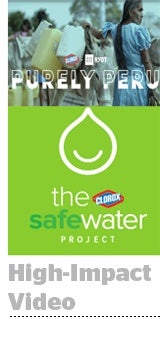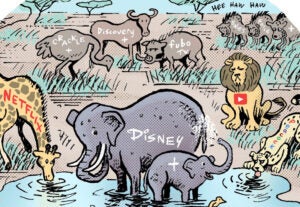 Everyone needs bleach. That’s why brands like Clorox have a lot of repeat buyers.
Everyone needs bleach. That’s why brands like Clorox have a lot of repeat buyers.
The question is: How do you build support for a social cause when you’re selling bleach?
Clorox already does a lot of TV and pre-roll advertising, but this week it tested its first 360-degree educational video focusing on 18-34-year-olds.
The socially aware campaign video described a lesser-known benefit of bleach: how it purifies clean water. Clorox focused on Peru, where one in seven people don’t have access to safe water.
“A 360-degree format is high-tech and immersive, which we thought would attract those users who may have less experience with bleach,” said Gabriele Amtmann, associate director of marketing for Clorox.
Clorox tapped AOL’s content studio and The Huffington Post’s virtual reality division, RYOT, to create the video, which is accessible through VR headsets, HuffPost’s RYOT app and YouTube 360.
Clorox had an existing relationship with HuffPost, whose articles attract consumers interested in social issues.
Since this is Clorox’s first dip into 360-degree video, this campaign is more about experimentation than setting strict performance goals for now – though the video ad includes a “donate” button, which can help the brand better gauge conversions.
Marketers measure 360-degree video a little differently than standard pre-roll video, which prioritizes completions.
Immersive formats tend to measure engagement with the ad – whether a consumer tilted the screen or how long they interacted with it.
“We’re using data from this campaign to inform new research around understanding emotional engagement – as opposed to just views – around 360-degree video,” added Molly Swenson, CMO of HuffPost RYOT. “The donate button in this campaign is the first one that we’ve incorporated in our VR content to date.”
Consumer reception will determine whether Clorox invests more in 360-degree video based on consumer receptivity to the Safe Water Project campaign.
“We would love if we could leverage this type of execution more broadly,” Amtmann said. “I do think there is an opportunity across more of our brands and programs.”













